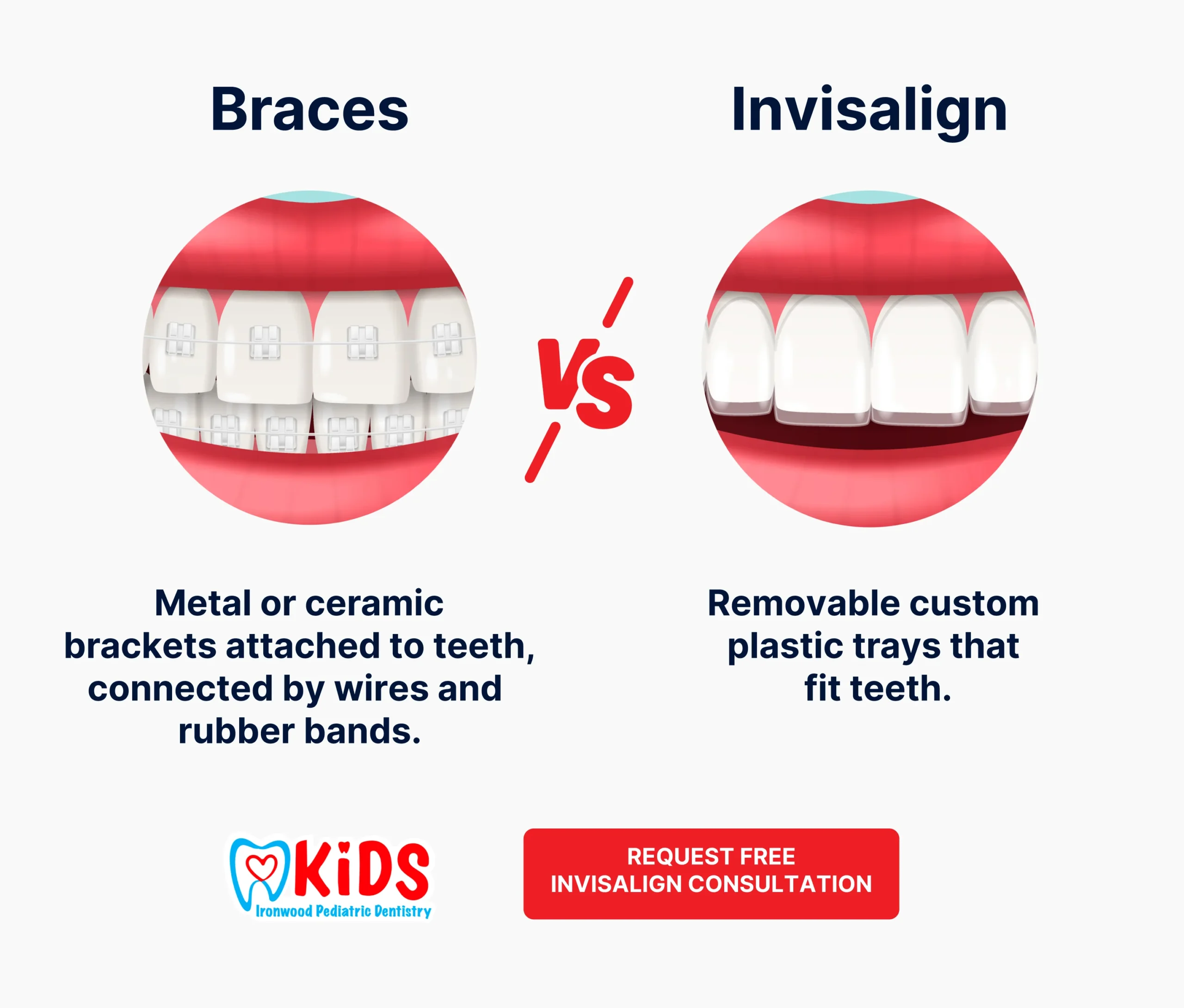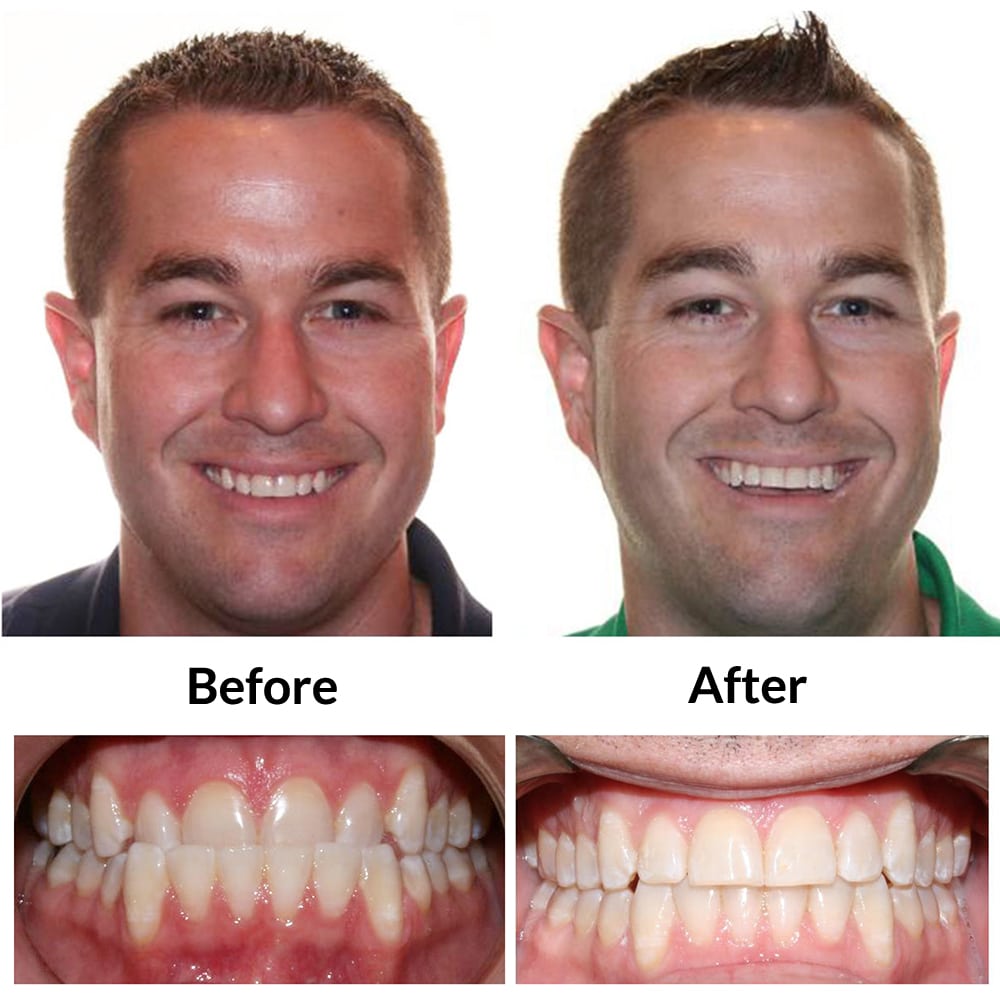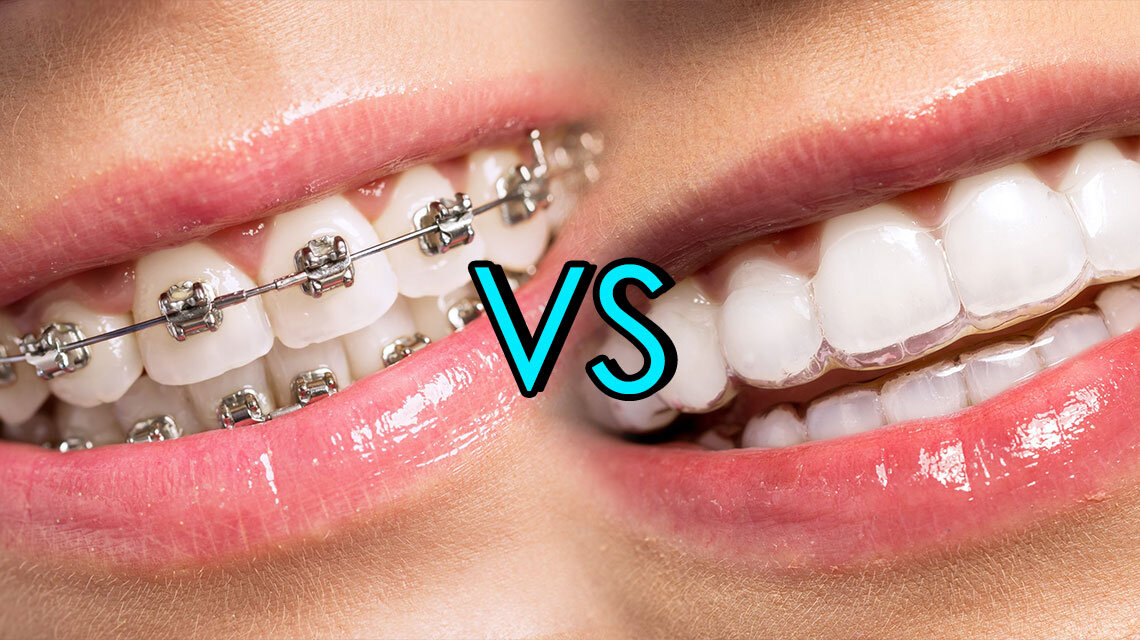The Price of Invisalign: Recognizing the Investment in Your Smile
The Price of Invisalign: Recognizing the Investment in Your Smile
Blog Article
Invisalign vs. Typical Dental braces: Which Option Is Right for You?
When taking into consideration orthodontic treatment, the choice between Invisalign and standard braces presents several crucial variables that warrant mindful analysis. Invisalign uses a very discreet alternative with removable aligners, while typical braces provide a much more visible yet effective option for extreme misalignment.
Summary of Therapy Options

On the other hand, conventional braces consist of metal brackets and cables that are bonded to the teeth. This technique applies continuous pressure over time to attain alignment. While efficient for intricate orthodontic issues, conventional dental braces need normal check outs for modifications and can present difficulties in maintaining dental hygiene as a result of the problem of cleaning up around cords and brackets.
Both options have their merits, and the option often pivots on specific dental conditions, way of life preferences, and client conformity. Eventually, getting in touch with an orthodontic expert is essential for figuring out the most ideal treatment plan tailored to private demands. Understanding the subtleties of each alternative can significantly influence the total success of orthodontic treatment.
Aesthetic Considerations
A substantial factor influencing the choice in between Invisalign and typical dental braces is the visual appeal each therapy uses. Invisalign aligners are crafted from clear plastic, making them virtually invisible when put on.
On the other hand, typical dental braces contain metal brackets and wires, which can be more noticeable. While advancements in orthodontic modern technology have caused the development of smaller brackets and colored elastics, standard dental braces still maintain an even more noticeable profile. For some people, the visibility of dental braces may deter them from seeking needed treatment.
Eventually, the option in between Invisalign and conventional braces may pivot on individual choices regarding visual appeals. People who prioritize discernment often lean toward Invisalign, while those who are much less concerned about exposure might select standard braces. Recognizing the aesthetic implications of each choice is important for making an educated choice that straightens with one's way of living and preferences.
Convenience and Convenience

In terms of convenience, Invisalign aligners are detachable, allowing clients to enjoy their favored foods without constraint and keep optimum dental health. Brushing and flossing are streamlined, as the aligners can be taken out throughout these routines, whereas traditional dental braces need careful maneuvering around braces and cables.
In comparison, standard braces demand routine adjustments, making them less convenient for those with busy routines. On the whole, the convenience and convenience of Invisalign make it an enticing selection for many individuals seeking orthodontic therapy.
Treatment Duration and Performance
While both Invisalign and conventional braces work in remedying oral misalignments, the duration of treatment can vary considerably in between both alternatives. Typically, Invisalign treatment can take anywhere from 12 to 18 months, relying on the intricacy of the instance. The clear aligners work by gradually moving teeth into their wanted settings, and regular follow-ups with an orthodontist aid ensure progression stays on the right track.
In contrast, standard braces usually need a great post to read longer dedication, typically ranging from 18 months to 3 years. This is due to their set nature and using braces and cables, which can be much more effective for extreme misalignments and complex situations (Invisalign). The therapy effectiveness of standard dental braces is well-documented, as they enable precise modifications and better control over tooth movement
Eventually, the option between Invisalign and typical braces might depend upon both the anticipated treatment duration and the particular dental problems my review here handy. Consulting with an orthodontist is important, as they can provide tailored recommendations based on individual requirements, making sure the picked method straightens with preferred end results and durations.
Price Comparison and Insurance Choices
Price plays a considerable duty in the decision-making procedure for people taking into consideration orthodontic therapy, whether choosing Invisalign or traditional braces. On average, the cost of Invisalign arrays from $3,000 to $8,000, while standard braces commonly cost between $2,000 and $6,000. Variables affecting these costs include the complexity of the instance, the period of therapy, and geographical place.
Many dental insurance coverage strategies give partial coverage for orthodontic therapies, but the specifics can vary widely. Normally, conventional dental braces might be much more regularly covered by insurance policy strategies contrasted to Invisalign, which some insurers classify as an aesthetic treatment.
In addition, several orthodontic practices offer versatile repayment plans, making both treatment options extra accessible. Clients ought to ask about possible financing options and discount rates for in advance repayments. Assessing the total price, including insurance coverage benefits and layaway plan, is vital for making an informed decision that straightens with both visual preferences and spending plan factors to consider.

Verdict
In recap, the option in between Invisalign and conventional braces depends upon several factors, consisting of aesthetic choices, comfort, YOURURL.com therapy period, and cost. Invisalign provides a very discreet, detachable choice that assists in dental health and dietary versatility, while typical dental braces might be more ideal for complicated oral problems and typically come with a lower rate point. Inevitably, appointment with an orthodontist is vital to examine individual conditions and identify one of the most suitable therapy choice for accomplishing optimum dental positioning.
When considering orthodontic treatment, the selection in between Invisalign and traditional dental braces presents several crucial factors that warrant cautious evaluation.Contrasting Invisalign and conventional braces exposes distinct therapy options for orthodontic improvement.While both Invisalign and conventional dental braces are effective in dealing with dental imbalances, the duration of therapy can differ substantially between the two alternatives.Expense plays a substantial role in the decision-making procedure for people thinking about orthodontic therapy, whether opting for Invisalign or standard dental braces.In summary, the option in between Invisalign and standard dental braces hinges on several variables, including visual choices, comfort, treatment period, and price.
Report this page